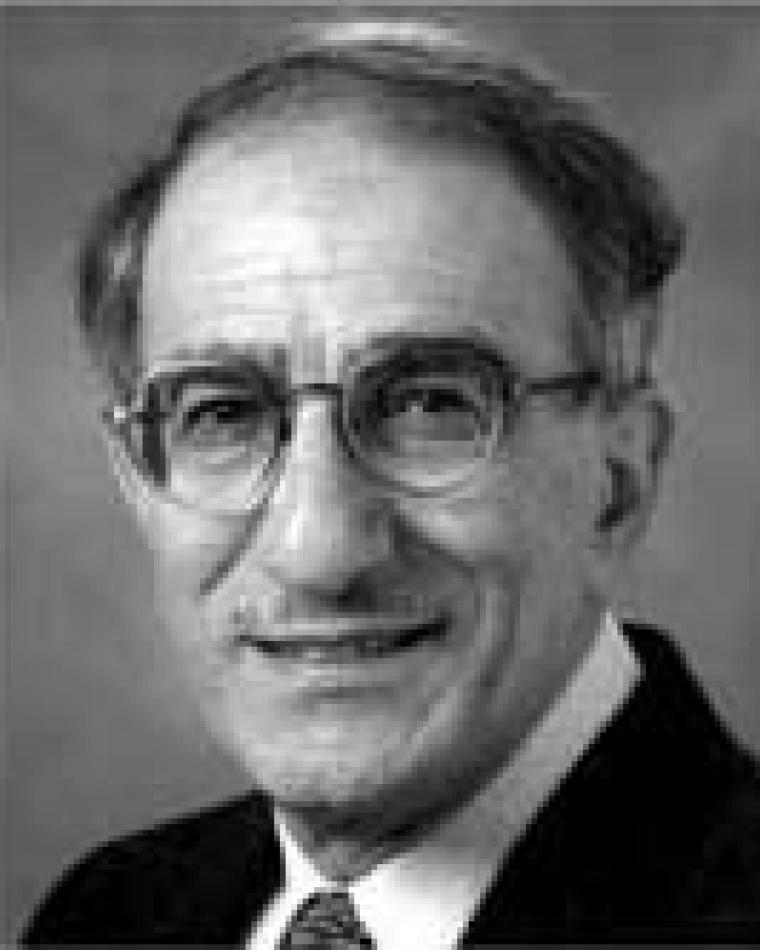
George A. Samara
George A. Samara
Contact Menu
George Samara was an internationally recognized scientist for his pioneering work on structural phase transformations involving ferroelectric materials. Through his research studies, he became perhaps the world’s most accomplished scientist in the use of high pressure for fundamental studies of the dielectric and structural properties of such materials. Although George was born in southern Lebanon in 1936, his father was a United States citizen. He came to the United States as a sixteen-year-old and graduated from the University of Oklahoma; then he went to the University of Illinois at Urbana where he earned a doctorate in chemical engineering in 1962. This was under the direction of Professor Harry Drickamer, who was a hard task-master. His thesis work as well as continued collaborations with Drickamer covered a wide range of materials. These include pressure effects on the resistance of metalloids, simple fcc and bcc, II-VI, III-V compounds to more exotic fused-ring aromatics. This collaboration with Drickamer continued into the 1970s. Later other co-authors also enjoyed such long enduring relationships, several extending over two and three decades. Even though a list of co-authors exceeds 70, George was also the single author of nearly 100 papers. Upon completing his degree at Illinois in 1962, he joined Sandia National Laboratory, but immediately fulfilled his military duty spending the next two years as an ROTC officer [Commissioned Lieutenant] at the Institute of Exploratory Research for the U. S. Army Electronics Laboratory at Fort Monmouth, New Jersey. There he was able to continue research involving pressure effects on solids, including the pressure homogeneity of the sample in the pressure apparatus, and developed various techniques to measure the physical properties under pressure, such as compressibilities, electrical conductivities, dielectric constants, and Curie points. This effort was with Armando Giardini and others at Fort Monmouth. Also included was a paper in the area of what became of major importance to not only the entire world-wide research field, but also his personal research, as well as to Sandia- ferroelectrics. Returning to Sandia, George began and continued an active personal research effort up to the final days of his life. In fact he was investigating a promising new ferroelectric material when he passed away. George’s numerous scientific papers included pioneering work on structural phase transformations, semiconductor physics, ferroelectrics, ferroelectric polymers, nanosized semiconductor clusters, defects, deep electronic levels, relaxation in crystalline solids and polymers, ionic transport, ceramics, photovoltaics, and MBE and CVD synthesis and processing. Among the invited reviews are two chapters in Solid State Physics, “The Study of Soft Mode Transitions at High Pressure” with Paul Peercy and “High Pressure Studies of Ionic Conductivity in Solids”. Through this research effort, George became perhaps the world’s most accomplished scientist in the use of high pressure for fundamental studies of electronic and structural properties of solid state materials.
In high pressure science George was active in national and international organizations. He served as Vice President and Executive Committee of the International Association of High Pressure Science and Technology (AIRAPT); Chairman of the U. S. Department of Energy (DOE) Panel on High Pressure Science and Technology; Chairman 1974 Gordon Conference on Research at High Pressure; Co-Chair and Program Chairman of the 1993 Joint AIRAPT/American Physical Society Conference on High Pressure Science and Technology. George was awarded the Ipatieff Prize of the American Chemical Society. In 1986 he was elected to the [U.S.] National Academy of Engineering. He was a Fellow Member of the American Physical Society and the American Association for the Advancement of Science. His activities also included editorial or advisory boards on Ferroelectrics, Reviews of Scientific Instruments, and Journal of Physics and Chemistry of Solids.Those of us who were familiar with George’s unusually accomplished research career as well as his extraordinary organizational ability to develop a host of national and international materials research activities might also realize he possessed excellent management skills. At Sandia National Laboratory, he was initially promoted in 1967 and served in various management capacities involving oversight of research in condensed matter physics, electronic materials and phenomena, chemistry research activities, advanced materials and nanoscience. His interaction, insight and support of those and other collaborating scientists led to world-wide recognition of excellence for various individuals and groups. George had a unique combination of deep scientific understanding and insight, foresight, friendliness, and personal and organizational leadership abilities. He was widely recognized for his high professional, ethical, and scientific standards that have inspired all who had contact with him. In addition to overseeing management of these research activities, George took on additional management responsibilities. During the last thirteen years of his career, he served as Manager of Sandia Laboratories DOE Basic Energy Sciences Materials. He was largely responsible for developing the concept for the DOE Center of Excellence for the Synthesis and Processing of Advanced Materials, a coordinated, cooperative venture among twelve national laboratories and several industrial and university partners, and he served as its Director. In this effort, he earned the admiration and respect from his colleagues at the other national laboratories and the materials research community for his unbiased even-handed coordination and leadership. Based on his technical management and leadership George was awarded the American Chemical Society’s Earle B. Barnes Award for Leadership in Chemical Management in 2000. For amazing as his technical accomplishments were, George was much broader, a man for all seasons. In his younger days, he hiked the local New Mexico mountains as well as in the midrange of the Sierra Nevada in California. He was a respectful opponent in tennis. He visited Lebanon through the years; there he met and married his wife, Helen. Those that lived or visited Albuquerque enjoyed the Lebanese hospitality and food at their home. Fresh grapes, apricots, and particularly two varieties of figs were provided from his back yard. He enjoyed gardening, the arts, particularly music, and even wrote poetry for his church congregation. George was a gift to us all. He will be sorely missed.
